
TechJunkie Expert Recommendations
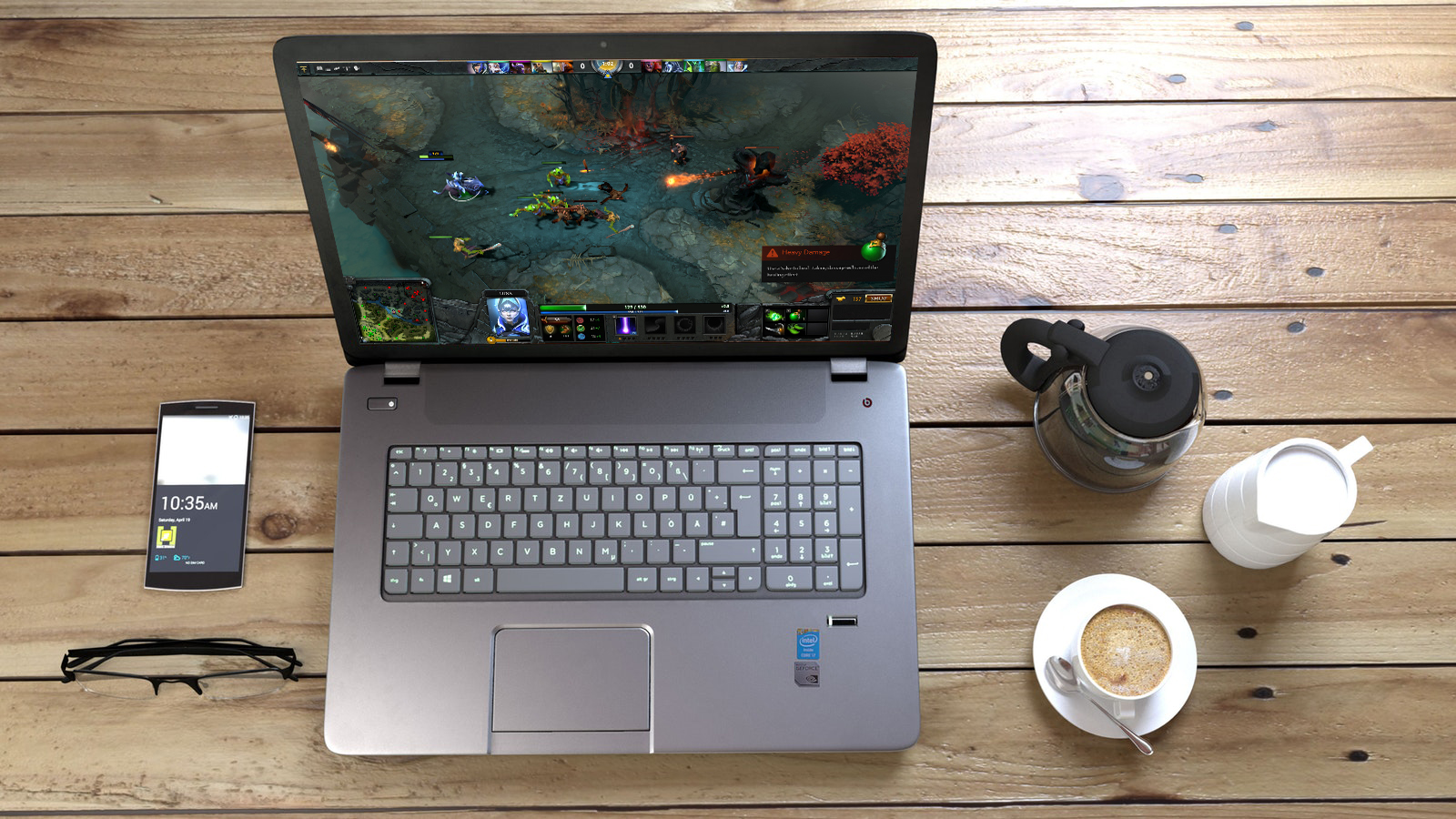
As a genre, the MOBA has moved from an unknown niche community all the way to a worldwide phenomenon, responsible for sweeping along the entire competitive gaming scene and building eSports from an underground community to receiving championship coverage on ESPN and awarding multi-million dollar cash prizes at the top conferences for both League of Legends and DotA 2. Since the rise of both titles in the late 2000s and early 2010s, dozens of different MOBAs and MOBA-likes have arrived on the scene, on PC, MacOS, consoles, and even iOS and Android phones. As a genre of game, it’s quickly become one of the most popular—and controversial—game types on the market today, and it’s easy to see why. The MOBA scene is popular, competitive, and a whole lot of fun.
If you’re unaware, allow us to fill you in with a quick guide to the basic guidelines of this genre (and for experts and legacy players out there, understand that this is a basic guide to MOBAs!). The MOBA, or multiplayer online battle arena genre, is a competitive team-based online game in which, in typical standard matches, teams of five face off against each other on a large map. Each team member chooses a separate character, and that character fulfills a necessary role on the team. Like with any competitive game, most players have a standard character type they play, and MOBAs are no different; players usually fall into one of five archetypes. The AD Carry and AP Carry are typically the main damage dealers of the game, with the AD focusing on using melee and physical attacks, while the AP uses magic and spells. While these two character roles typically claim the most kills, they’re also susceptible to the most deaths in the game, as their defense is often quite weak. That’s where two more roles come in: the tank and the support. The tank is the opposite of a carry; while his attack and magic powers are often quite low, he specializes in defense and absorbing hits without dying. A good tank can defend his team in a face-off and live to tell the tale. The support, meanwhile, typically sticks by the AD Carry’s side for the first half of the game, healing and applying buffs to boost their carry’s power. For the second half of the match, the support extends their powers to the entire team, healing and buffing as needed. Contrary to popular belief, the support is one of the most important roles in the game, even if no one ever wants to play. Finally, there’s the jungler, but to explain their role, we’ll have to first explain how the game is played.

In a standard, basic match of the average MOBA game, each team of five begins on either the lower-left or upper-right corner of the map. The map is divided into three lanes, all spawning from the base. The tank typically goes to the top lane, the AP Carry heads to the mid lane, and the AD Carry and his or her support head to the bottom lane. Each lane has two “towers” per team (four total), represented by the dots above. The towers act as defense, damaging enemy team members that get too close to the tower. In addition to the lanes, there’s also a “jungle,” which is where the team’s fifth member, the jungler, comes in; they spend their time in the jungle destroying high-powered creatures for buffs, and sneak around to different lanes to help catch the enemy members in a surprise 2v1 or 3v2 match-up. Each team’s goal is simple: use your respective creeps—small creatures controlled by the AI and easily killed—to work towards destroying the enemy team’s towers in each lane. Once the lane is cleared, work toward getting to the enemy’s spawn area, and destroy the target—sometimes called the “Nexus” or “Ancient,” depending on the game you’re playing—inside the base of your enemy. If you have a high-functioning team, with each player playing their role correctly and working together, you can almost always overcome your enemy and win the match. Of course, as with any multiplayer sport, if your team falls apart, so do your chances of winning.
With its infinite replayability, high-stakes competitive plays, and the rewarding feeling of success when your team triumphs, it’s no surprise MOBAs have set the world ablaze. They’re easy to learn, difficult to master; quick to get into, but easy to feed thousands of hours of your life. The two established leaders of the genre, League of Legends and DotA 2, have been around for nearly a decade and feature some of the best, most experienced players in the game. If you’re trying to dip your toe into the genre without giving your life away or getting crushed by a player who understands the game better than you, you might be interested in checking out some of the lesser-known MOBAs available on your PC.
While standard MOBA games can be difficult to learn and master, sticking to your guns when learning how to play each independent game is the best way to learn, allowing you to try out your skills as they grow and mastering each individual gameplay mechanic one at a time. Today, we’ll be taking a look at some of the best MOBAs you can download for your PC. For our comparison, we’ll be looking at the controls, graphics, and community for each title to bring you the best the Play Store has to offer. Without further ado, let’s dive right in.
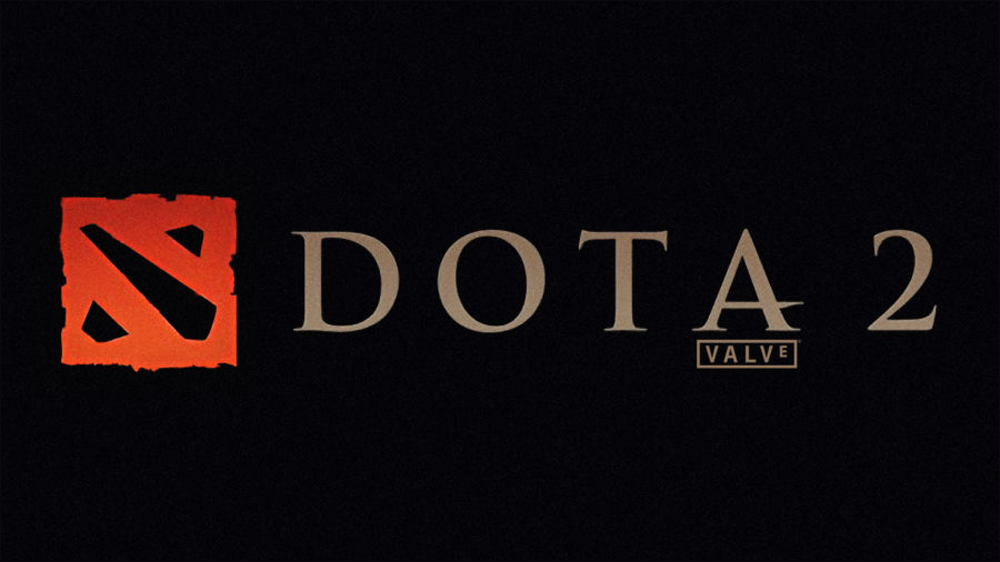
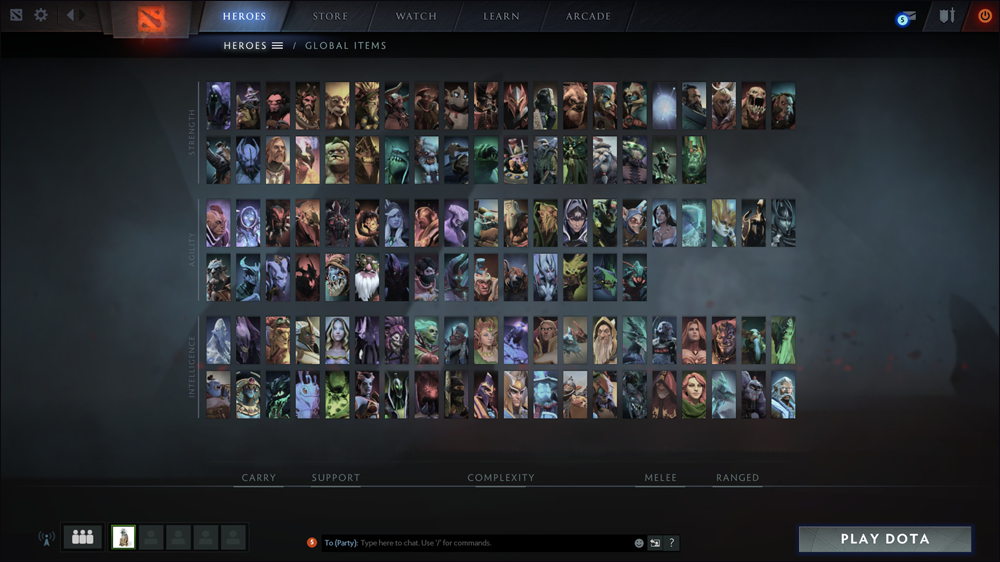
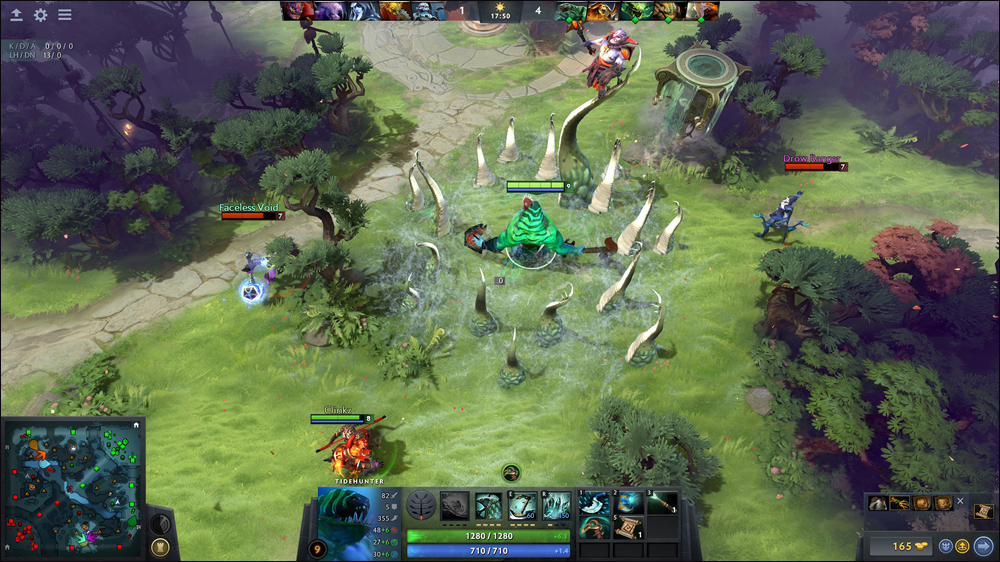

We know that some readers may be disappointed seeing Dota 2 sitting in the top spot, and that’s understandable. A list like this is always going to be contentious, especially when you’re talking about the Dota 2 community versus the League community. Both games have been on the market for years at this point, each with established bases. Dota 2 is the newer game, having seen a full release in 2013, but of course, the Dota 2 community spans back to 2003 with the release of the original Defense of the Ancients mod for Warcraft 3, the very mod that created this entire genre. At the end of the day, Dota 2 and League of Legends are the two giants of this world, and two of the games with which the eSports community has risen to extreme prominence. The game you choose to play between these two will largely depend on what your friends play, as well as which you find more interesting both mechanically and visually. 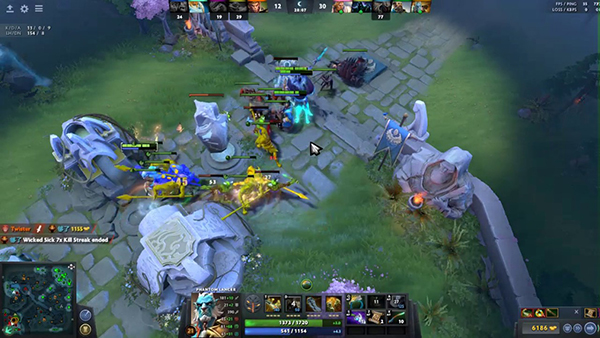 With all that said, Dota 2 is inarguably one of the best MOBAs on the market today. A free to play game brought to players by Valve, the developer behind Half Life, Portal, and the Steam marketplace, Dota 2 is a standard five-on-five multiplayer game in which two teams known as the Radiant and the Dire battle it out on a standard 3×3 lane field, as seen in the basic diagram above. There are 115 different playable characters, or “heroes” to choose from, and each serves a purpose in team composition, along with a standard set of strengths, weaknesses, and attributes. Each character has a standard leveling system, along with the ability to make gold. The leveling system is used to unlock skills and abilities throughout the game. The strongest of these, the “ultimate,” requires the player reaching level six before it can be unlocked. Gold, meanwhile, is made through “farming,” or killing the creeps on the battlefield, and used to purchase items through the in-game store to power or heal your character. Unlike in League of Legends and other similar MOBAs, Dota 2 allows you to “deny” creeps to the enemy, by killing your own creeps. Since the player who gets the killing hit on a creep is the player who gets the allotted gold, it’s a solid way to make sure the enemy team can’t make progress through the game.
With all that said, Dota 2 is inarguably one of the best MOBAs on the market today. A free to play game brought to players by Valve, the developer behind Half Life, Portal, and the Steam marketplace, Dota 2 is a standard five-on-five multiplayer game in which two teams known as the Radiant and the Dire battle it out on a standard 3×3 lane field, as seen in the basic diagram above. There are 115 different playable characters, or “heroes” to choose from, and each serves a purpose in team composition, along with a standard set of strengths, weaknesses, and attributes. Each character has a standard leveling system, along with the ability to make gold. The leveling system is used to unlock skills and abilities throughout the game. The strongest of these, the “ultimate,” requires the player reaching level six before it can be unlocked. Gold, meanwhile, is made through “farming,” or killing the creeps on the battlefield, and used to purchase items through the in-game store to power or heal your character. Unlike in League of Legends and other similar MOBAs, Dota 2 allows you to “deny” creeps to the enemy, by killing your own creeps. Since the player who gets the killing hit on a creep is the player who gets the allotted gold, it’s a solid way to make sure the enemy team can’t make progress through the game. 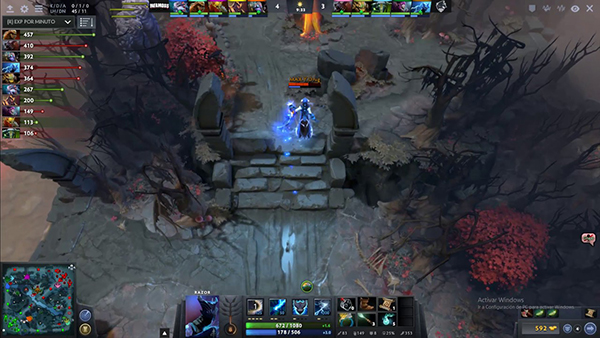 As we outlined in the intro above, the basic goal of Dota 2 is to reach the enemy base and destroy the “Ancient,” thus the name of the original game, Defense of the Ancients. Along the way, you’ll have to work together in your team’s standard roles, like AD carry or jungler, to make sure that the opposing team’s Ancient is destroyed. This includes destroying the defensive targets that stand in the way of each lane, helping your teammates as needed in times of crisis, and, during late-game, taking down Roshan, a powerful creep that gives the killing team gold and drops an item that allows the user to revive from a death. As with any MOBA, victory relies both on the strength of each player and the ability to work together as a team in order to take down the opposing players. Like any MOBA, Dota 2 is a game that is better taught through experience rather than lecture. You can read up about how a game, hero, or item works, but until you use it inside the game itself, you likely will be inexperienced. Dota 2 is a game that can be played endlessly; some players hit thousands of hours on this single game alone. If you’re interested in learning Dota 2, you’ll want to make sure you have a good PC, a solid keyboard and mouse, and if possible, a friend that can walk you through it. Playing the tutorial provided by Valve is a good bet as well, and since the game is free to play, you won’t be losing any cash in the long-run. Unlike games like League of Legends, which feature a rotating cast of free characters during the week with the option to buy new characters through in-game or cash-based currencies, Dota 2’s heroes are all free, all the time, so if you want to learn how to play a specific role or champion, the only thing stopping you is yourself. And of course, as with any online game, starting with bot matches can be a great way to get the feel of the actual mechanics of the game, though longtime Dota players will tell you to avoid playing against the AI for too long.
As we outlined in the intro above, the basic goal of Dota 2 is to reach the enemy base and destroy the “Ancient,” thus the name of the original game, Defense of the Ancients. Along the way, you’ll have to work together in your team’s standard roles, like AD carry or jungler, to make sure that the opposing team’s Ancient is destroyed. This includes destroying the defensive targets that stand in the way of each lane, helping your teammates as needed in times of crisis, and, during late-game, taking down Roshan, a powerful creep that gives the killing team gold and drops an item that allows the user to revive from a death. As with any MOBA, victory relies both on the strength of each player and the ability to work together as a team in order to take down the opposing players. Like any MOBA, Dota 2 is a game that is better taught through experience rather than lecture. You can read up about how a game, hero, or item works, but until you use it inside the game itself, you likely will be inexperienced. Dota 2 is a game that can be played endlessly; some players hit thousands of hours on this single game alone. If you’re interested in learning Dota 2, you’ll want to make sure you have a good PC, a solid keyboard and mouse, and if possible, a friend that can walk you through it. Playing the tutorial provided by Valve is a good bet as well, and since the game is free to play, you won’t be losing any cash in the long-run. Unlike games like League of Legends, which feature a rotating cast of free characters during the week with the option to buy new characters through in-game or cash-based currencies, Dota 2’s heroes are all free, all the time, so if you want to learn how to play a specific role or champion, the only thing stopping you is yourself. And of course, as with any online game, starting with bot matches can be a great way to get the feel of the actual mechanics of the game, though longtime Dota players will tell you to avoid playing against the AI for too long. 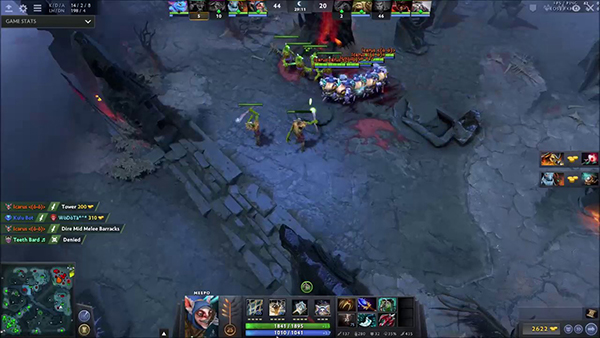 The fight between Dota 2 players and League of Legends players is akin to this generation’s Coke versus Pepsi, albeit at a more niche level. Both games have their fans, with players typically choosing and sticking to the one they try first or enjoy more. Both are standard MOBA fare, well-made free to play games that don’t require real-world money spent in order to have a good time. The differences between the two games really come down to the subtlety of how each mechanic works. In our experience with both games, the mechanics in Dota 2 have a bit more depth to them, specifically when it comes to how abilities and skill shots work, and the importance of denying creeps to the enemy team. Some players prefer their games with a bit more of a difficulty curve, and Dota certainly has that. The Dota community is an average online gaming forum, with its fair share of trolls and harassment, but overall, you’re likely to find a community willing to allow new players in so long as those players put in the work to learn the game. Dota 2 is an excellent offering in the MOBA genre, and it’s our top pick for best MOBA on PC.
The fight between Dota 2 players and League of Legends players is akin to this generation’s Coke versus Pepsi, albeit at a more niche level. Both games have their fans, with players typically choosing and sticking to the one they try first or enjoy more. Both are standard MOBA fare, well-made free to play games that don’t require real-world money spent in order to have a good time. The differences between the two games really come down to the subtlety of how each mechanic works. In our experience with both games, the mechanics in Dota 2 have a bit more depth to them, specifically when it comes to how abilities and skill shots work, and the importance of denying creeps to the enemy team. Some players prefer their games with a bit more of a difficulty curve, and Dota certainly has that. The Dota community is an average online gaming forum, with its fair share of trolls and harassment, but overall, you’re likely to find a community willing to allow new players in so long as those players put in the work to learn the game. Dota 2 is an excellent offering in the MOBA genre, and it’s our top pick for best MOBA on PC.
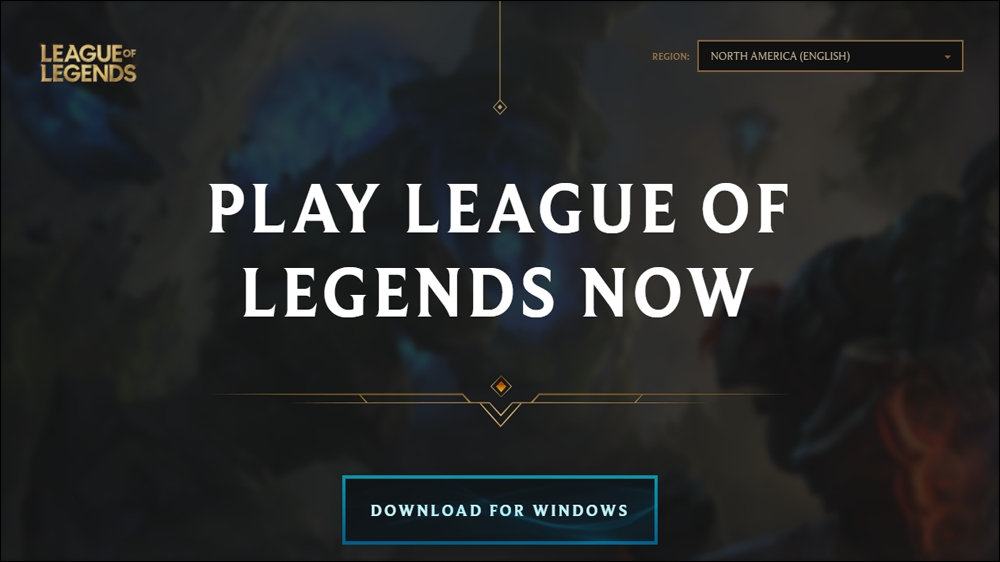


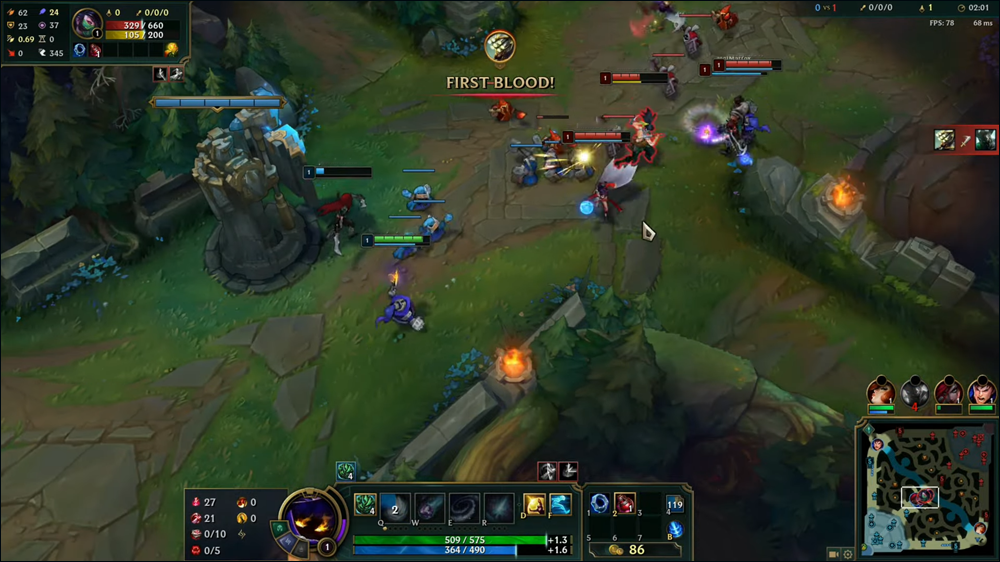
The yang to Dota’s yin, League of Legends is a free to play game beloved by millions of players and fans around the world, complete with large tournaments and huge payouts for professionally-competing teams. While Dota 2 might be a beloved game, it doesn’t come close to hitting the numbers reached by League. Developer Riot Games reported back in 2016 that League of Legends had hit 100 million monthly players around the world, an absolutely insane amount of users, and while that number perhaps isn’t sustainable, it is worth noting that the game is an absolute behemoth when it comes to player count. Like Dota 2, League of Legends spawned from the original Defense of the Ancients mod in Warcraft 3. While Valve bought the rights to the Dota name, League of Legends actually has Steve Feak, the original designer behind Defense of the Agents behind it. This makes League just as much of a Dota sequel as Dota 2 proper, and having been on the market for over eight years since its original launch of the game, it’s become a phenomenon in its own right. 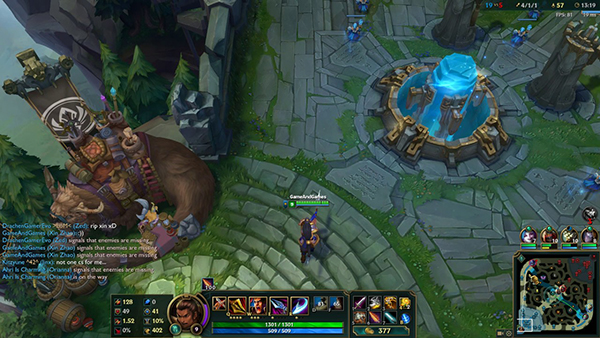 Explaining the basic gameplay of League is difficult, because it’s incredibly similar to the gameplay described both in our intro piece and in the entry on Dota 2. League is another entry in the standard isometric five-on-five multiplayer arena in which two teams go head to head. Unlike Dota 2, the two teams don’t have an official name, but the arena does: Summoner’s Rift (though you’ll find other arenas and game modes available for use as well). There are 138 characters to choose from in League, called “Champions,” and as we saw in Dota 2, each serves a unique purpose in team composition. The standard leveling system and gold farming work relatively the same here, with four abilities mapped to the QWER buttons on your keyboard and unlocked as you level up. The final, most powerful move is also called your “ultimate” or “ult,” for short, and is still unlocked at level six. Unlike in Dota 2, where the shop is called to your location, the shop in League is in your base, where you heal and restore your attributes, requiring a trip back to the base to raise your attributes beyond the basic leveling system. Similarly, while League also has creeps (or “minions”), you won’t find any creep denying here. In League, the goal is to work with your team to destroy the Nexus, which serves the same purpose as the Ancient in Dota’s terms. League’s game-time is largely composed of the same sorts of objectives you’ll find in Dota. Each character has a standard lane they stay in, and that champion works through the lane, battling and sparring both creeps and the opposing player. Defensive towers attack players that find themselves in the range of damage, and must be destroyed in order to continue into the main base. Each base has three Inhibitors, which, when destroyed, spawn super minions that are stronger than your average creep. Once a team has destroyed all three Inhibitors, it often means a defeat for the opposite team. As with Dota 2, there are other goals to complete during the game, including killing both the Elder Dragon and Baron Nashor, two monsters which function similarly to Roshan in Dota 2.
Explaining the basic gameplay of League is difficult, because it’s incredibly similar to the gameplay described both in our intro piece and in the entry on Dota 2. League is another entry in the standard isometric five-on-five multiplayer arena in which two teams go head to head. Unlike Dota 2, the two teams don’t have an official name, but the arena does: Summoner’s Rift (though you’ll find other arenas and game modes available for use as well). There are 138 characters to choose from in League, called “Champions,” and as we saw in Dota 2, each serves a unique purpose in team composition. The standard leveling system and gold farming work relatively the same here, with four abilities mapped to the QWER buttons on your keyboard and unlocked as you level up. The final, most powerful move is also called your “ultimate” or “ult,” for short, and is still unlocked at level six. Unlike in Dota 2, where the shop is called to your location, the shop in League is in your base, where you heal and restore your attributes, requiring a trip back to the base to raise your attributes beyond the basic leveling system. Similarly, while League also has creeps (or “minions”), you won’t find any creep denying here. In League, the goal is to work with your team to destroy the Nexus, which serves the same purpose as the Ancient in Dota’s terms. League’s game-time is largely composed of the same sorts of objectives you’ll find in Dota. Each character has a standard lane they stay in, and that champion works through the lane, battling and sparring both creeps and the opposing player. Defensive towers attack players that find themselves in the range of damage, and must be destroyed in order to continue into the main base. Each base has three Inhibitors, which, when destroyed, spawn super minions that are stronger than your average creep. Once a team has destroyed all three Inhibitors, it often means a defeat for the opposite team. As with Dota 2, there are other goals to complete during the game, including killing both the Elder Dragon and Baron Nashor, two monsters which function similarly to Roshan in Dota 2. 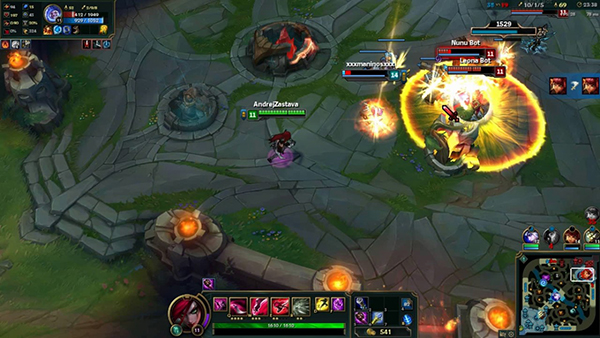 As we saw with Dota 2, League of Legends is a game built on free to play mechanics. That said, the two have fairly different versions of mechanics, and while neither is free to play, there is a bit more pressure to spend real-world currency in League. We mentioned above that Dota 2 keeps all of its heroes available for all players; League of Legends, on the other hand, keeps a rotating cast of characters during each week that cycles out every seven days. While this does allow you to focus on only a select number of champions in order to learn how each function and play each champion, it also means you’ll have to spend either in-game money or real money on permanently unlocking the characters you love. You do earn Blue Essence for each game you play, which can be used to unlock champions and chroma skins, but alternate skins have to be purchased with Riot Points, which is exchanged for real cash. It’s unfortunate that skins can only be bought with real cash, but considering this is a free to play game and not a full-priced $60 title—not to mention the fact that the only thing requiring real cash are cosmetic changes—means it’s a bit easier to ignore.
As we saw with Dota 2, League of Legends is a game built on free to play mechanics. That said, the two have fairly different versions of mechanics, and while neither is free to play, there is a bit more pressure to spend real-world currency in League. We mentioned above that Dota 2 keeps all of its heroes available for all players; League of Legends, on the other hand, keeps a rotating cast of characters during each week that cycles out every seven days. While this does allow you to focus on only a select number of champions in order to learn how each function and play each champion, it also means you’ll have to spend either in-game money or real money on permanently unlocking the characters you love. You do earn Blue Essence for each game you play, which can be used to unlock champions and chroma skins, but alternate skins have to be purchased with Riot Points, which is exchanged for real cash. It’s unfortunate that skins can only be bought with real cash, but considering this is a free to play game and not a full-priced $60 title—not to mention the fact that the only thing requiring real cash are cosmetic changes—means it’s a bit easier to ignore. 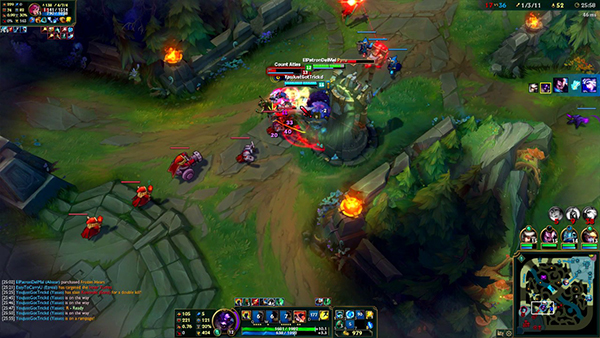 In comparing League and Dota 2, we found the mechanics of League to be a bit easier to understand overall. This is a double-edged sword: it’s certainly a game that we found easier to dive into than Dota 2. There are less skill shots (though they are there) and more automated skills that are a bit easier to target when playing the game. That isn’t to say there aren’t more champions that are challenging; it’s just a bit easier to dive into some easy champions like Master Yi or Ashe than it is in Dota. At the same time, however, Dota 2 might be more rewarding to players looking for a challenge, something with a bit more depth than League of Legends. Both of these MOBAs are top of their class, with intense followings on either side of the line, and which you play typically boils down to personal preference and the selections made by your own friends and fellow players. If you’re looking to dive right into the MOBA genre with no prior experience, download both and try them out. As free to play games, you can’t go wrong with your decision.
In comparing League and Dota 2, we found the mechanics of League to be a bit easier to understand overall. This is a double-edged sword: it’s certainly a game that we found easier to dive into than Dota 2. There are less skill shots (though they are there) and more automated skills that are a bit easier to target when playing the game. That isn’t to say there aren’t more champions that are challenging; it’s just a bit easier to dive into some easy champions like Master Yi or Ashe than it is in Dota. At the same time, however, Dota 2 might be more rewarding to players looking for a challenge, something with a bit more depth than League of Legends. Both of these MOBAs are top of their class, with intense followings on either side of the line, and which you play typically boils down to personal preference and the selections made by your own friends and fellow players. If you’re looking to dive right into the MOBA genre with no prior experience, download both and try them out. As free to play games, you can’t go wrong with your decision.
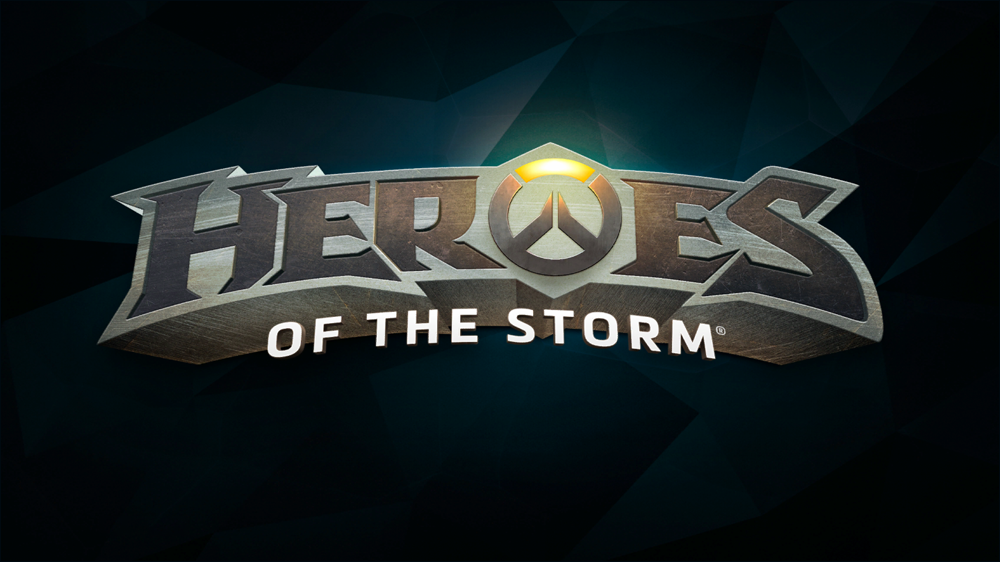
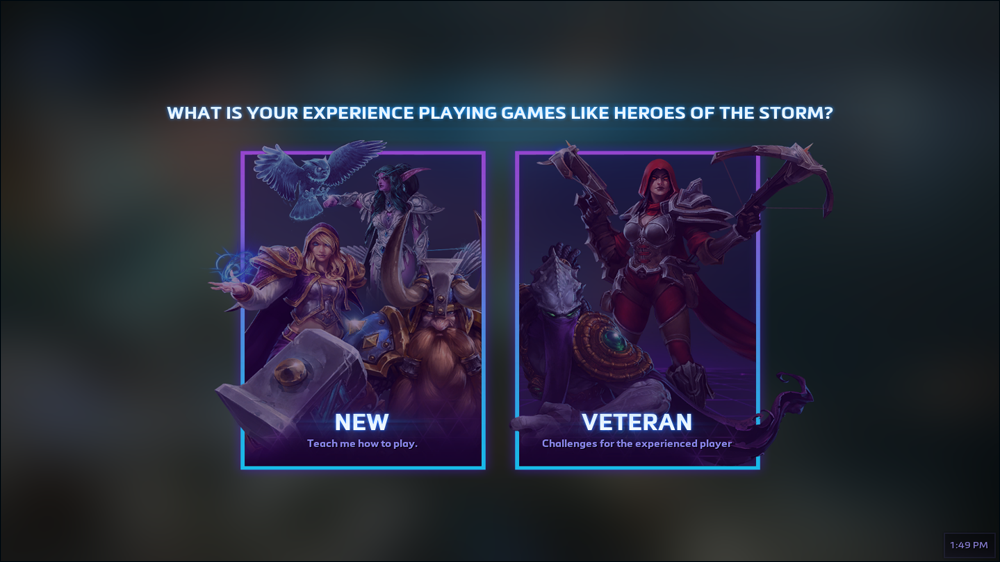
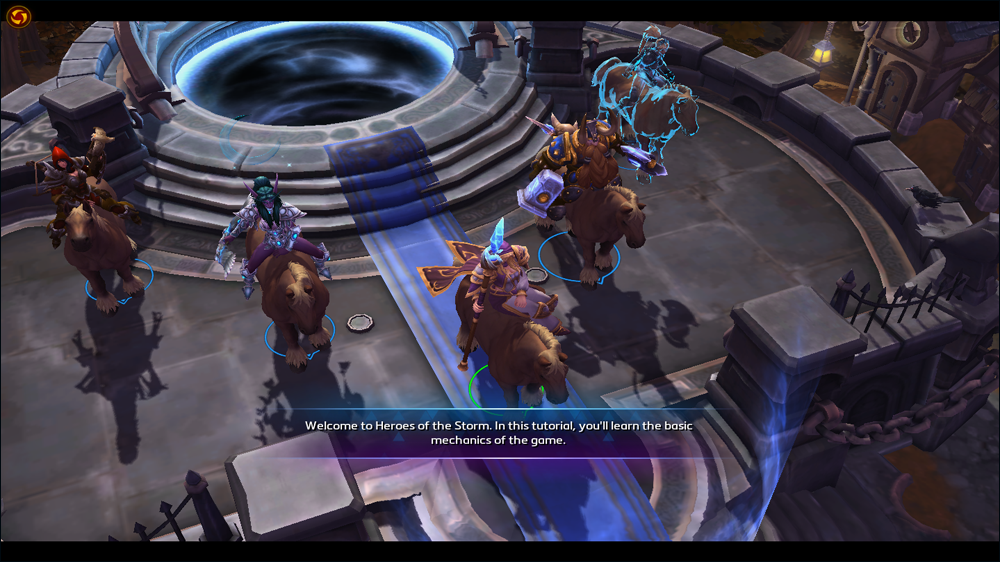
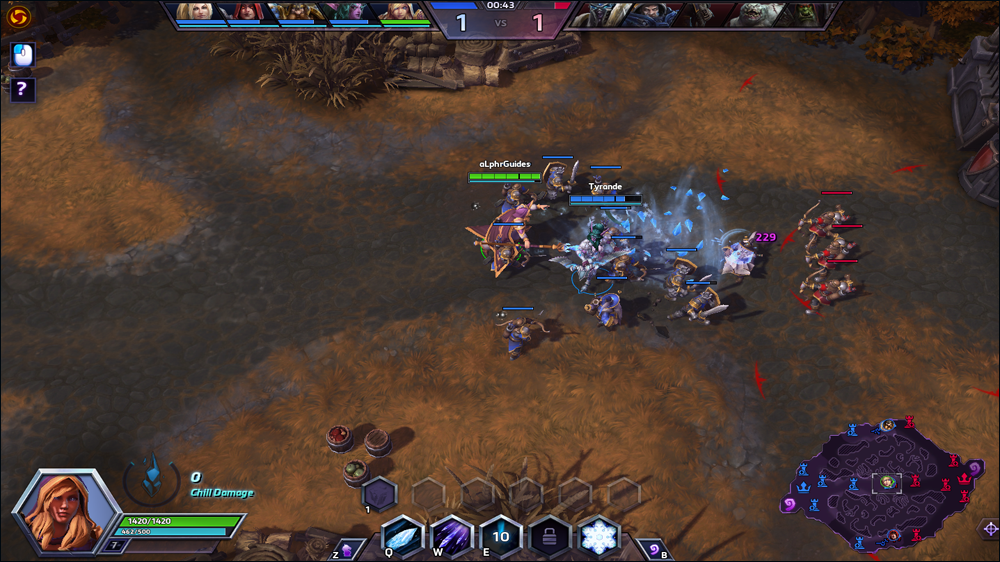
All of that said, if you’re entirely new to the genre, you might want to try out Blizzard’s Heroes of the Storm. Though not referred to as a MOBA by Blizzard explicitly, the type of play or or less matches exactly what you would expect from something like a League of Legends or Dota 2, albeit with a bit more simplicity and straightforwardness that makes it ideal for both newcomers to the genre or anyone looking for something a little easier or less time-consuming to get good at. As with other MOBAs, HotS is a 5v5 team-based game, complete with different modes and the ability to select from different playable characters that are free to use on a weekly basis. There are 71 heroes available to play currently, with each unlockable through both microtransactions and in-game currency, along with 13 different maps that each have their own goal (similar to Blizzard’s own Overwatch). HotS has a few quality of life improvements that really help the game’s community; for example, in quick play, you choose which hero you wish to play prior to jumping into queue, which allows the game itself to form teams with a solid composition, eliminating the risk of “autolock” trolls. Overall, Heroes of the Storm is a great starter MOBA, or a great secondary choice for those looking for something to play in their spare time outside of Dota 2 or League of Legends. There are some really interesting modifications to the genre here, and it’s refreshing to see a major company doing its own thing with the classic ideas of a MOBA.




Speaking of changing up the genre, that’s exactly what we’ve seen from Smite, a game described by developer Hi-Rez Studios as an “action MOBA.” Smite is a multiplatform title, with options to play on PC, MacOS, PS4, and Xbox One, and is the first non-isometric title on this list, with gameplay instead focused on a 3D third-person perspective. Smite has been around since 2012, and while it hasn’t risen up to the same popularity of, say, Dota 2 or League of Legends, it’s still a fairly-popular selection for folks who don’t enjoy isometric games. The game does stay true to the majority of MOBA tropes, however, with two five-person teams battling it out in an arena throughout three lanes running through the map. There are 92 characters in Smite, each based on an ancient pantheon, including Greek, Roman, Japanese, and Celtic. Outside of the 3D perspective and the focus on ancient gods battling in a colosseum, however, much of smite retains the same gameplay we’ve come to expect from MOBAs. The standard mode has three lanes, a jungle, and a target to take out in each enemy’s base, and while you might be playing from a different perspective, you’ll still be pushing your character through a 20-level system with skillsets to unlock throughout the game. If isometric top-down MOBAs aren’t for you, Smite is a great choice for something different.




Paragon hasn’t officially launched out of beta yet, but it is playable on both Windows and PS4, and has been available to download on both platforms since 2016 (along with a physical retail PS4 version that you can pick up for about $30). Like most MOBAs, Paragon is a free to play game that focuses on the standard three lane, 5v5 gameplay of the genre. The game was developed by Epic Games, a developer largely known for their Unreal Engine 4 that powers plenty of modern titles, along with games like Fortnite and the original Gears of War trilogy. In terms of graphical powers, Paragon is by far the best looking game on this list. It’s absolutely gorgeous, with high-res graphics available on both PS4 and PC. Like Smite, Paragon is played with a third-person view behind your champion, as you work your way down each lane to battle to the base of your enemy. Paragon’s biggest change comes from the addition of loot boxes in each game, which gives you cards and allows you to build your decks. Loot boxes are having a moment of controversy throughout the gaming community as we write this, but it’s worth noting that loot boxes here don’t break the game; it isn’t pay to win, according to Epic Games. Overall, Paragon is a great MOBA to pick up if you dig Smite but want something with better graphics, or something you can play with your friends on PS4. Update: On January 26, 2018, Epic Games announced they were shutting down Paragon following the success of Fortnite. We’ll replace this entry in our next update of the list.




Like Smite and Paragon, Awesomenauts is both a PC-based and console-based game, having first been released for PS3 and Xbox 360 in May of 2012 and Windows shortly thereafter. Over its five and a half years of existence, the game has also been ported to PS4 and Xbox One, and most recently, ended up as a free-to-play game on PC, which means anyone looking for a new MOBA can try out Awesomenauts without dropping a dime. As we saw with Paragon and Smite, Awesomenauts takes the typical MOBA styling and turns it on its head, with a fully-2D world inspired by fighting and platformer titles. In the game, two teams of three players work to reach the enemy’s base and destroy the Solar Connector before their opponents do the same. With different maps available, it’s easy to change up the game on the fly without it getting too boring. Awesomenauts is the easiest MOBA to dive into on our list, and it’s also the only game with local splitscreen co-op play available, perfect for having some people over to your house. It definitely brings a different feel to the genre, while still being great for learning the rules and tropes of the game. With the free-to-play patch having been pushed out a few months ago, there’s never been a better time to dive in and try Awesomenauts.
If you don’t see an app that should be here, let us know what it is